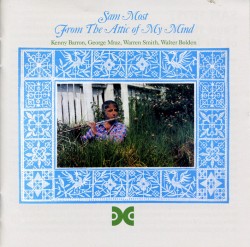 From the Attic of My Mind
From the Attic of My Mind
Sam Most
Xanadu Master Edition 906074 (elemental-music.com)
Herbie Mann may have been the most prolific; Pail Horn the most mystical; and Moe Koffman the one who composed the tune most closely identified with the instrument, but the musician who assuredly created a niche for the flute in modern jazz was Sam Most. Most (1930-2013) was an unprepossessing journeyman who spent most of his career in Hollywood studios and Las Vegas show bands. But by the early 1950s, his rhythmic overblowing and expanded colour palette fully confirmed the flute’s improvisationary dexterity. Backed matchlessly by pianist Kenny Barron, bassist George Mraz, drummer Walter Bolden and percussionist Warren Smith, the reissued 1978 session, From the Attic of My Mind, is doubly valuable since it’s the only CD made up completely of Most’s compositions.
With an economy of phrasing and an extravagance of taste, Barron amplifies Most’s tonal strategies, whether it’s moderato low-pitched sonority on the bossa nova-like Breath of Love or the funky boogaloo of Keep Moving. In the latter, the flutist’s Rahsaan Roland Kirk-like note popping coupled with unison throat vocalizing is given extra impetus by Smith’s swiveling pulses and ratcheting pressures. Most also demonstrates his flexibility by transforming a romantic introduction that evolves from Mraz’s bowed bass lines into a jumping romp on Child of the Forest, and performing a similar feat with You Are Always the One that expands from a backwards turning ballad to a finger snapper with a solo that encompasses a quote from Manhattan, ornamental cadenzas and peeping beats. But it’s the simplicity of the blues that best showcase Most’s balance of passion and precision. His low-pitched rhythmic stutters intensify the earthy mood that a groove engendered by locked double bass and piano chording on Blue Hue begins; while Out of Sight in Mind contrasts his muscular flute lines with Barron’s most delicate pianism.
Like an author whose freshness of style grew out of his initial ingenuity, and is recognized only after it has been put in the context of others’ prose that this CD confirms Most’s historical importance as a pioneering flutist while also preserving high-quality sounds.



